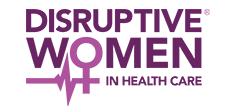Did you know that over 4.5 million people were injured at work in 2022 alone? Many people that suffer from workplace injuries have serious, long-term health problems.
Unfortunately, there are a lot of issues with our healthcare system. This can make it harder for people to recover from workplace accidents. This is especially true with certain blue-collar workers that are at high risk of developing injuries but don’t have the best healthcare. Construction workers are a prime example.
Disparities in Healthcare Harm People Trying to Recover from Workplace Injuries
There are many trends shaping the healthcare system, but they are not all good. One issue is the growing disparity in healthcare access.
Healthcare disparities are differences in healthcare access between two or more groups. In a country like the United States of America, where healthcare is privatized, there are clear disparities between the healthcare options available to people from different social classes. In this system, whoever pays the most can access better-quality healthcare, from preventive to emergency and recovery care. The healthcare system in America provides the highest quality healthcare for billionaires, and it provides less and less care to people when we go down the income and wealth scale until it stops providing some types of healthcare altogether.
Low-income people have no access to preventative or recovery care. Even with government programs like Medicaid, many Americans are still one medical emergency away from bankruptcy or crippling debt. However, healthcare inequality is not only happening due to economic factors. Ethnicity, immigration status, gender, and language barriers increase healthcare access inequality. Healthcare inequality is an intersectional problem in the U.S. That means that inequality increases if people are part of more than one marginalized group. People who are low income have unequal access in comparison to people with high income; immigrants have unequal access to citizens; non-English speaking people have healthcare disparities in comparison to fluent English speakers. One of the most marginalized groups when it comes to healthcare inequality is Hispanic immigrants working in construction.
Healthcare Inequality Cost to the Economy
One of the main arguments used to justify healthcare inequality is that people should get the care they can afford to pay for. This approach lacks basic empathy. It centers economic gain above human life and health. However, that approach is also bad macroeconomics. According to a Deloitte Health Equity Institute report, health inequalities generate at least $42 billion in lost productivity annually.
The reason is simple: a worker with underlying medical issues will not be as productive as a healthy worker. A construction worker who did not have the appropriate rehabilitation and recovery treatment after an accident will inevitably be less productive than when they were healthy.
In addition to losing productivity, quality of life, and life expectancy, low-income and marginalized people tend to pay more to solve preventable health issues. People in marginalized groups do not receive preventive or rehabilitation care. Therefore, their conditions worsen until it becomes an emergency or a chronic disease that requires a higher expense to treat. Health inequities cost approximately $320 billion to underserved groups and could top $1 trillion by 2040. Due to Inequitable healthcare access, disadvantaged people pay to cure or treat conditions that could have been prevented or promptly rehabilitated with a more equitable healthcare system.
Health access gaps between the rich and the poor in the U.S. translate into border societal disparities, with the richest 1% of American men living an average of 14.6 years more than the poorest 1%. In some places, the life expectancy disparity increases to 20 years.
Healthcare Inequality in Construction Work
Construction work is the second deadliest occupation in the U.S. Fatalities in construction work have more than doubled in the past decade. 2.4 out of every 100 workers get injured on construction sites, and 23 out of every 100,000 construction workers die due to work-related injuries. Hispanic and Black workers have a higher percentage of injuries and accidents in comparison to their non-Hispanic white counterparts. Just from 2018 to 2020, the fatality rate for Hispanic construction workers increased by 46.5%, while it decreased by 6.3% for non-Hispanic workers. The disparity in accidents and fatalities grows starker when we consider immigration status. Immigrants account for more than 63.5% of Hispanic work-related deaths. Hispanic Immigrants are the most likely people to die in a construction work accident in the U.S.
Despite the dangers of construction work, nearly 24% of construction workers do not have health insurance, more than double the rate for all U.S. workers. Hispanics are the least insured group. Almost half of Latino Construction workers don’t have insurance, compared to 13% of non-Hispanic whites. That is no surprise when we consider that less than 30% of Hispanic construction workers get insurance from their employers.
Not having health insurance means that people have less access to medical attention, especially preventive and rehabilitation care. However, the consequences of not having health insurance are of great concern in construction work. A Hispanic worker who does not have health insurance and does not win a personal injury claim will most likely not receive adequate recovery and rehabilitation care, and the injuries sustained can result in chronic pain, reduced mobility, and productivity.
Factors Contributing to Healthcare Disparities
As mentioned at the beginning of this article. Healthcare inequality is an intersectional systemic issue. That means the system is designed to have inequalities, and multiple factors increase or determine healthcare inequalities. The main factors that generate healthcare disparities are:
- Wealth: The healthcare system in America is designed to have stark wealth inequality. The wealthier a person is, the more healthcare they get; the poorer, the less coverage.
- Lack of Insurance: This is related to wealth and other factors like immigration status. In the U.S., many companies provide health insurance to their employees. However, only 30% of Hispanic construction workers get insurance from their employers. That means that low-income construction workers have to pay insurance out of pocket or risk not having any insurance for emergencies.
- Ethnicity: When we consider that almost half of Latino construction workers have insurance compared to only 13% of white construction workers. We have to acknowledge that ethnicity is a factor that determines healthcare inequalities.
- Immigration Status: Hispanic immigrant construction workers, regardless of their immigration status, tend to have less access to work where employers provide insurance and tend to work low-income jobs. Many do not dedicate their income to paying for insurance and premiums. Furthermore, Immigrant workers are usually less informed about their rights and the responsibilities of their bosses to ensure safety at the workplace.
- Limited access to government programs: Undocumented workers and some documented immigrants don’t have access to government programs like Medicaid or financing programs that help cover medical expenses.
- Language barriers: About 86% of Hispanic Immigrants speak Spanish at home, and two-thirds don’t feel fluent when speaking English. Many hospitals and emergency rooms don’t have proper translators to enable proper communication past simple emergency care. Therefore, any preventative or recovery care is often overlooked by the medical staff and the immigrants themselves, generating health outcome disparities.
- Lack of culturally competent healthcare: Even when hospitals have proper care or the patient can communicate in English, many hospitals and emergency rooms are not culturally competent. That means that their approach and communication with a patient from a different culture will most likely be deficient and probably alienating.
- Lac of unionization: Unionized construction workers are nearly 50% more likely to receive employment-based insurance and twice as likely to have their premiums fully paid by their employers compared to non-unionized workers. Additionally, 70% of union members’ health insurance covered their families. Being part of a union greatly increases a worker’s likelihood of having insurance.
Healthcare Disparity Reduction Through Legal Representation
Healthcare disparities produce economic gains for some people but deteriorate most people’s health and the nation’s economic output. To make things worse, many insurance companies try to pay workers as little as possible after a construction work accident. The coverage some workers receive sometimes does not cover all their rehabilitation process or lost wages due to recovery. Many workers don’t know the full extent of their rights, so they take the first offer they get from insurance companies without hiring a lawyer who can help them get enough compensation to be able to have financial security during their recovery. Insured or non-insured workers, migrants with visas, green card holders, citizens, or undocumented immigrants who suffer an accident at a construction site will reduce medical disparities and get the justice they deserve by hiring experienced worker compensation and personal injury lawyers.








